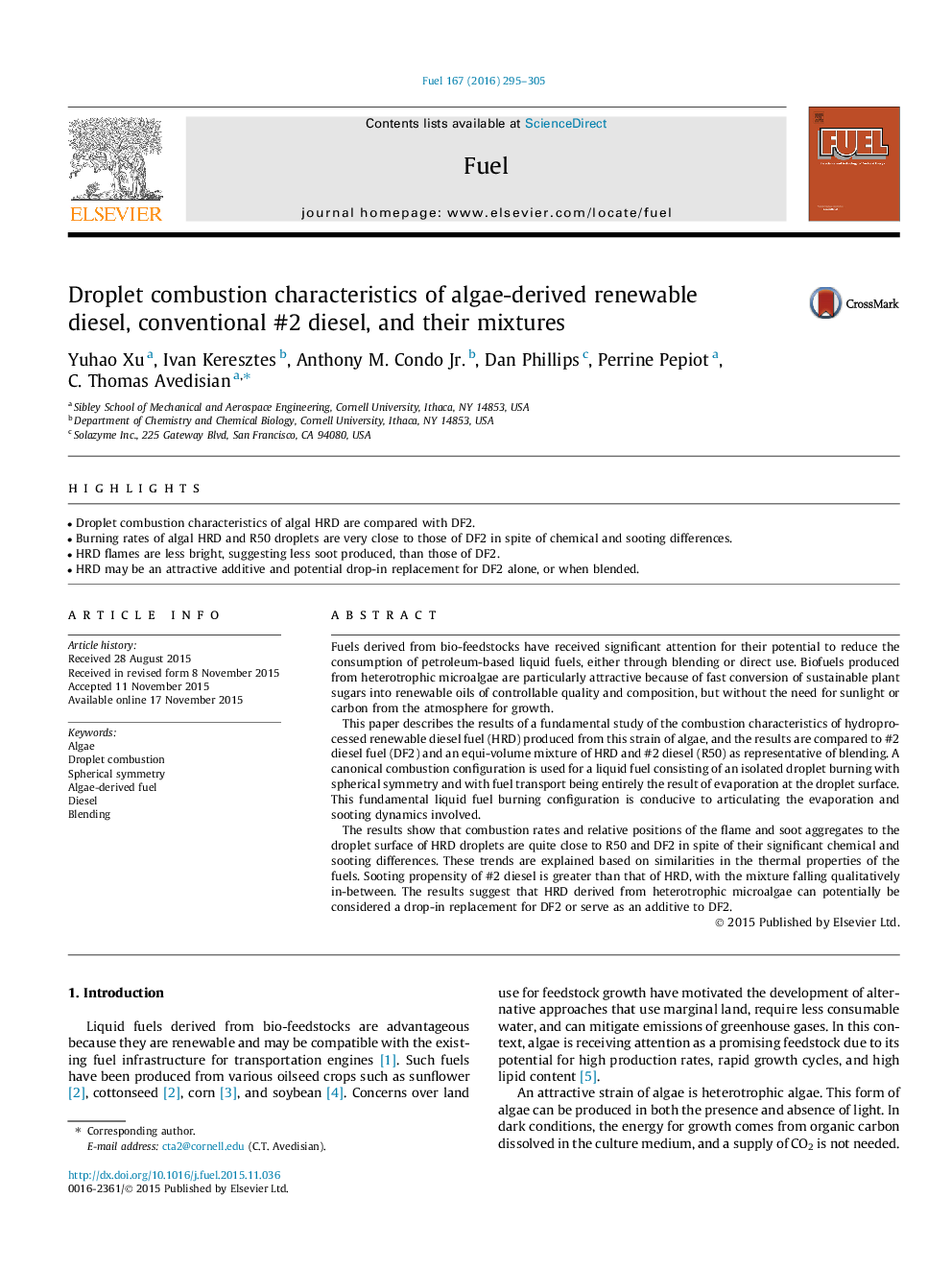| کد مقاله | کد نشریه | سال انتشار | مقاله انگلیسی | نسخه تمام متن |
|---|---|---|---|---|
| 205356 | 461105 | 2016 | 11 صفحه PDF | دانلود رایگان |
• Droplet combustion characteristics of algal HRD are compared with DF2.
• Burning rates of algal HRD and R50 droplets are very close to those of DF2 in spite of chemical and sooting differences.
• HRD flames are less bright, suggesting less soot produced, than those of DF2.
• HRD may be an attractive additive and potential drop-in replacement for DF2 alone, or when blended.
Fuels derived from bio-feedstocks have received significant attention for their potential to reduce the consumption of petroleum-based liquid fuels, either through blending or direct use. Biofuels produced from heterotrophic microalgae are particularly attractive because of fast conversion of sustainable plant sugars into renewable oils of controllable quality and composition, but without the need for sunlight or carbon from the atmosphere for growth.This paper describes the results of a fundamental study of the combustion characteristics of hydroprocessed renewable diesel fuel (HRD) produced from this strain of algae, and the results are compared to #2 diesel fuel (DF2) and an equi-volume mixture of HRD and #2 diesel (R50) as representative of blending. A canonical combustion configuration is used for a liquid fuel consisting of an isolated droplet burning with spherical symmetry and with fuel transport being entirely the result of evaporation at the droplet surface. This fundamental liquid fuel burning configuration is conducive to articulating the evaporation and sooting dynamics involved.The results show that combustion rates and relative positions of the flame and soot aggregates to the droplet surface of HRD droplets are quite close to R50 and DF2 in spite of their significant chemical and sooting differences. These trends are explained based on similarities in the thermal properties of the fuels. Sooting propensity of #2 diesel is greater than that of HRD, with the mixture falling qualitatively in-between. The results suggest that HRD derived from heterotrophic microalgae can potentially be considered a drop-in replacement for DF2 or serve as an additive to DF2.
Journal: Fuel - Volume 167, 1 March 2016, Pages 295–305
